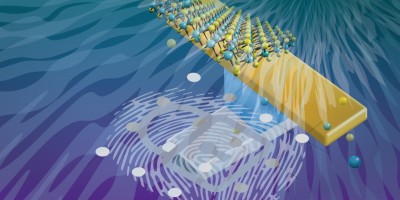Nature provides an endless source of inspiration for advanced materials, fuelled by evolutionary innovations over many millions of years. Capitalizing on this wealth of biological solutions requires an approach to materials innovation that is informed by a holistic understanding of multi-functional biological systems and leverages the defining feature of the natural world — diversity.

References
Ng, L., Elgar, M. A. & Stuart-Fox, D. From bioinspired to bioinformed: benefits of greater engagement from biologists. Front. Ecol. Evol. 9, 790270 (2021).
Swanson, B. O., Anderson, S. P., DiGiovine, C., Ross, R. N. & Dorsey, J. P. The evolution of complex biomaterial performance: the case of spider silk. Integr. Comp. Biol. 49, 21–31 (2009).
Garner, A. M. et al. The same but different: setal arrays of anoles and geckos indicate alternative approaches to achieving similar adhesive effectiveness. J. Anat. 238, 1143–1155 (2021).
Mitchell, J. G. et al. The role of diatom nanostructures in biasing diffusion to improve uptake in a patchy nutrient environment. PLoS ONE 8, e59548 (2013).
Pro, J. W. & Barthelat, F. Is the Bouligand architecture tougher than regular cross-ply laminates? A discrete element method study. Extreme Mech. Lett. 41, 101042 (2020).
Eder, M., Amini, S. & Fratzl, P. Biological composites — complex structures for functional diversity. Science 362, 543–547 (2018).
Katiyar, N. K., Goel, G., Hawi, S. & Goel, S. Nature-inspired materials: emerging trends and prospects. NPG Asia Mater. 13, 56 (2021).
Rashid, M. M., Forte Tavčer, P. & Tomšič, B. Influence of titanium dioxide nanoparticles on human health and the environment. Nanomaterials 11, 2354 (2021).
McGaw, J., Andrianopoulos, A. & Liuti, A. Tangled tales of mycelium and architecture: learning from failure. Front. Built Environ. 8, 805292 (2022).
Karunarathna, S. et al. A new species of day gecko (Reptilia, Gekkonidae, Cnemaspis Strauch, 1887) from Sri Lanka with an updated ND2 gene phylogeny of Sri Lankan and Indian species. Zoosyst. Evol. 97, 191–209 (2021).
Acknowledgements
This article arose from an interdisciplinary workshop on bio-informed advanced materials sponsored by the University of Melbourne Hallmark Research Initiative in Bioinspiration. The authors acknowledge the contributions of the following participants to the ideas in this article: L. Barner (Queensland University of Technology), A. T. D. Bennet (University of Melbourne), S. J. Blamires (University of New South Wales; University of Technology), A. R. Evans (Monash University), A. Franklin (University of Melbourne), J. A. Hutchison (University of Melbourne), F. Jativa (University of Melbourne), A.-L. Jessop (Murdoch University), J. Kelley (The University of Western Australia), Y. H. Lau (University of Sydney), J. McGaw (University of Melbourne), J. Mei (Queensland University of Technology), M. Mirkhalaf (Queensland University of Technology), M. Musameh (CSIRO), C. Neto (The University of Sydney), A. J. O’Connor (University of Melbourne), T. Schork (Queensland University of Technology), A. Wang (University of New South Wales), J. A. Watson (University of the Sunshine Coast), L. Wesemann (University of Melbourne), W. W. H. Wong (University of Melbourne). D.S.-F was funded by the Australian Research Council (FT180100216).
Author information
Authors and Affiliations
Contributions
D.S.-F. and L.N. produced the initial draft manuscript and figure. All authors contributed to ideation and manuscript writing. Authors are listed in alphabetical order following the first two authors in the author list.
Corresponding author
Ethics declarations
Competing interests
The authors declare no competing interests.
Rights and permissions
About this article
Cite this article
Stuart-Fox, D., Ng, L., Elgar, M.A. et al. Bio-informed materials: three guiding principles for innovation informed by biology. Nat Rev Mater 8, 565–567 (2023). https://doi.org/10.1038/s41578-023-00590-w
Published:
Issue Date:
DOI: https://doi.org/10.1038/s41578-023-00590-w
- Springer Nature Limited
This article is cited by
-
Nature-inspired interfacial engineering for energy harvesting
Nature Reviews Electrical Engineering (2024)


